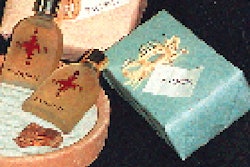And, contrary to reports you may be hearing elsewhere, those will continue to be the packaging materials of choice well into the next century. But share of market enjoyed by each of the four material categories will change. In fact, driven by economics, environmental issues, changing demographic patterns and advancing technologies, the shares have been shifting for some time: away from heavy, rigid container forms and toward lighter, more flexible types of packaging. For many glass container makers, the prevailing market direction has been toward extinction. In 1980 there were more than 100 glass container plants in the U.S. Today, there are only about 67 plants and a number of venerable glass container names are now nothing more than footnotes in a few corporate histories. If recent events are any guide, seven to 10 more U.S. glass container facilities could be shut down in the next 18 months. Two domestic majors Next year at this time, U.S. packagers will have only two domestic broad-spectrum glass producers to choose from: Owens-Brockway Glass Co., a division of Owens-Illinois, Inc. (Toledo, OH) and Compagnie Saint Gobain SA (Paris, France), whose U.S. operations are currently headquartered in Muncie, IN. That's because America's third largest glass container producer, Anchor Glass Container Corp. (Tampa, FL) has gone into Chapter 11 and is being sold by Vitro SA (Monterrey, Mexico) to St. Gobain. If the deal goes through, St. Gobain will be the largest producer of glass containers in the U.S., with a market share approaching 50%. That's a remarkable statistic in view of the fact that St. Gobain had zero presence in the American glass container market in 1994. But, just as the domestic glass container industry began to cast its investment eyes to Asia and Eastern Europe, St. Gobain jumped into the U.S. glass container market. It all started a little more than a year ago when St. Gobain, a diversified industrial company that is Europe's largest glass container maker, bought Foster-Forbes Glass Co. (Marion, IN) from American National Can Co. (Chicago, IL), as well as a 58% share in the glass container business of Ball Corp. (Muncie, IN). St. Gobain then folded the pieces into a joint venture with Ball called Ball-Foster Glass Container Co. (Muncie, IN). St. Gobain's market entry was a blow to Anchor, which had hoped to buy Foster-Forbes. Vitro has now decided to sell its money-losing U.S. operations, return to its Mexican roots and supply a smaller number of U.S. customers from its plants south of the border. Owens-Brockway, the glass container market leader until any Vitro/St. Gobain deal is sealed, has filed suit to prevent St. Gobain from buying Anchor. Even though most analysts believe this market consolidation will have a positive effect on O-B's glass container sales, the company's technology licensing business may be hurt. Most of the glass container producers around the world, including both Ball-Foster and Anchor, rely on Owens-Illinois technology to some extent. Motivation unclear Outsiders aren't sure if Owens is trying to block the Vitro/St. Gobain deal simply because it narrows the market for its technology or because Owens-Brockway is interested in acquiring one or more of Anchor's 13 plants. Anchor is counter-suing Owens-Brockway for interfering with its plans. Regardless of how the events play out, U.S. glass container buyers are likely to feel several effects from the latest consolidation in the business: - Glass container prices are likely to go up. Before its demise, Anchor's marketing strategy included an aggressive pricing strategy designed to support capacity utilization levels. With Anchor out of the picture (and a number of its plants likely to be shut), the glass container survivors won't hesitate to try to improve their margins. - We're apt to see fewer "innovative" glass containers. Anchor was known for its willingness to develop and produce non-commodity ware. Under the new regime, the plants that used to be Anchor's will likely be turned toward high-volume glass production where the glassmakers stand to make better profits. - Owens-Brockway will sell glass to more customers. Shaken by the industry's recent instability, some packagers who were buying only from Anchor and Ball-Foster will add O-B to their supplier lists. O-B's solid, profitable enterprise and astute management will attract both secondary and primary source business. - Foreign glass manufacturers, and the container distributors who've been an American market conduit for them, may get a business boost. Distributors with links to small off-shore producers in particular, may do well in the "specialty" glass container business that Anchor was noted for. It's tempting to suggest that the winnowing of glass container manufacturers in America signals the demise of an industry. But we don't believe it. Glass still represents a formidable packaging standard in performance and quality for many foods, pharmaceuticals, beer, wine and liquor against which other container forms cannot yet effectively compete. To be sure, there are "glass-clear" plastics out there that have captured share from glass. And a handful of laboratory polymers have proven capable of resisting higher food filling temperatures and maintaining the oxygen barriers required of beer (aliphatic polyketones and polyethylene naphthalate to name two). But these 21st century plastics are not yet economically viable packaging options for most foods and beverages. c Ben Miyares is vice president and editorial director of the new newsletter Packaging Management. He may be reached at 31408 Narragansett Lane, Bay Village, OH 44140. Telephone: 216/892-0998; Fax: 216/892-0208; e-mail: [email protected].





















